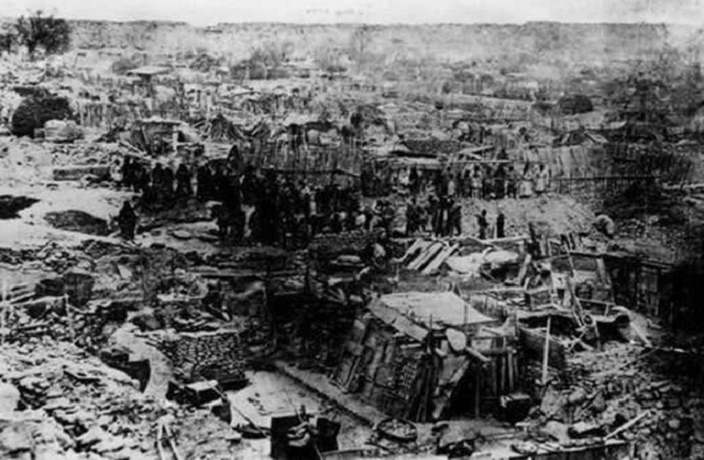The Haiyuan earthquake affected Haiyuan County in the Republic of China’s Ningxia Province on December 16, 1920. At the time of the earthquake, Gansu Province was a part of Ningxia, which is why it is sometimes referred to as the 1920 Gansu earthquake. The 7.8 magnitude earthquake struck at around 19:05:53 Gansu-Sichuan time and was quickly followed by a three-year series of aftershocks.
According to Chinese media reports today, the magnitude of the earthquake was 8.5 on the Richter scale, although the seismic scale was not mentioned. It utterly damaged the areas surrounding Lijunbu-Haiyuan-Ganyanchi and attained the Mercalli intensity level maximum (XII Extreme).
In Haiyuan County, approximately 73,000 people lost their lives. In Xiji County, Sujiahe village was buried by a landslide. Nearly 30,000 people were also killed in Guyuan County, almost every residence of Longde and Huining was demolished. In seven provinces and regions, Damage (VI–X) was reported, including the important cities of Xining, Taiyuan, Yinchuan Xi’an, and Lanzhou. It was felt from Nei Mongol (Inner Mongolia) to the Province of Qinghai and south to the middle of Sichuan Province through the Yellow Sea.
In a report published by the United States Geological Survey, a total of 200,000 casualties was claimed while 235,502 in the Catalog of Damaging Earthquakes in the World published by the International Institute of Seismology and Earthquake Engineering (through 2008).
More people died as a result of the harsh weather. Frequent aftershocks discouraged survivors from constructing anything more than temporary house structures, and as a result, many who survived the initial earthquake lost their lives as a result of the severe winter season. The Chinese seismologists amended their estimate to 273,400 casualties in 2010.
During the earthquake in Zhangjiachuan, the roof of the mosque where Ma Yuanzhang, the leader of the Sufi Jahriyya Muslim Hui sect, and his son were collapsed, killing them.
Surface faulting was reported for roughly 200 kilometers (125 miles) from Lijunbu to Jingtai. Throughout the Epicentral area, several landslides and ground fractures occurred. Some rivers were dammed, while others were redirected. In western Norway, two lakes and three fjords recorded seiches as a result of the earthquake.

